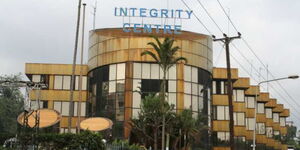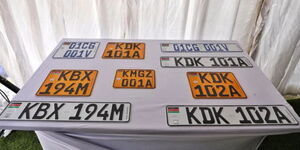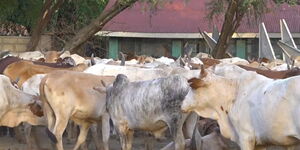Reports about Emirates' Airbus A380, the largest passenger aircraft ever made, diverting to Dar-es-Salaam, Tanzania instead of landing at the Jomo Kenyatta International Airport (JKIA), elicited debate on the airport's capability.
A conversation ensued on whether JKIA's runway has the capacity to handle the new generation wide-bodied aircraft such as the Airbus A380 and the Boeing 747.
Speaking to Kenyans.co.ke, Geoffrey Wageni, Flight Operations Assistant at Corporate Aviation Limited, affirmed that JKIA could accommodate big aircraft including cargo planes.
He, however, noted that a lot of factors are considered before an aircraft either takes off or lands at an airport.
"JKIA can accommodate big aircraft such as Boeing 747, Ilyushin Il-76 (Ukranian Airforce) and cargo planes such as Boeing 777 which come daily at night."
"In aviation, pilots have to consider aircraft performance and flight planning. This takes into account a graph indicating the atmospheric pressure, temperature, aircraft's weight (the aircraft is designed to carry at full capacity) and runway elevation," he stated.
According to the expert, big cargo planes operate at night when air molecules are condensed as opposed to during the day when the molecules are hot and scarce.
This, in turn, helps in enabling the plane to take off easily - a process enabled through aerofoil theory whereby the heavier the atmosphere, the easier it would be for the aircraft to gain lift.
Nevertheless, Wageni noted that a plane should use less than 80 per cent of the runway before gaining momentum to take off. If this is not possible, a pilot has two options: Either reduce the weight of the plane or use an alternate airport.
The expert noted that operators may have opted to land at Dar-es-Salaam instead of JKIA because of Mean Sea Level (MSL) performance.
"For instance, Dar-es-Salaam consists MSL, Mombasa is at fair sea level while in Nairobi (JKIA), it consists of an elevated sea level range if all factors remain constant according to international standard pressure. Hence, the higher you go, the more you lose pressure hence it's favourable to opt for Dar-es-Salaam," Wageni explained.
A spot check by Kenyans.co.ke, revealed that over 16 international airports are approved by the US Federal Aviation Administration. This, however, does not include alternate airports.












